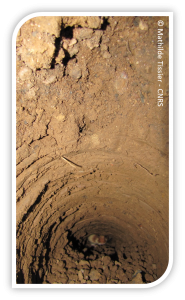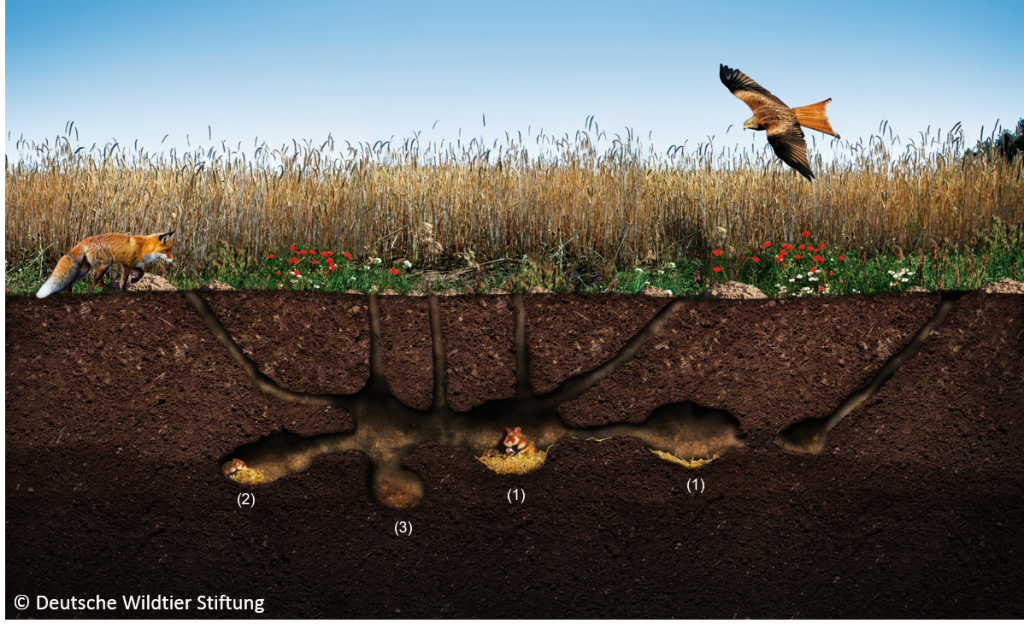Zooming in on the European Hamster’s den
25 mars 2015The European Hamster is a mysterious animal, rarely observed in the wild. This can be explained by the fact that it lives underground and only leaves for the surface either at dawn or at dusk.
So let’s find a bit more about this den, where it spends over 80% of its time.
This is a vast and well-organised den, located 80 cm from the surface and broken down into several different specific “rooms:” one or two reproduction or rest zones (1), a larder (2) and there are even “toilets” (3)! The den also has many galleries which allow the hamsters to have several emergency exits, should an intruder enter into the den.
How does it dig such a large and deep den? Watch the video for the answer.
- It digs it with its teeth (so you can say it’s really a rodent!)
- It used its front paws to dig further
- It evacuates the earth with its back paws, with a small body movement
So this means that when it is digging its den, sometimes we see it come out backwards, with its snout full of soil.
Sometimes deep down, it just digs using its teeth, and then fills up its jowls with earth, in order to empty them outside.
But what does the Grand Hamster do in winter?
 When it’s cold out, the hamster goes into its end, where it finds shelter from the cold weather and snow. In winter, its den is roughly two metres underground. At this depth, temperatures are approximately 10°C, and remain constant, even when it is below freezing in the fields. It then will go into hibernation, which is an energy-saving process where activity falls as well as body temperature. Body temperature falls from 37°C in activity to 12-15°C in hibernation, when the weather outside is 10°C.
When it’s cold out, the hamster goes into its end, where it finds shelter from the cold weather and snow. In winter, its den is roughly two metres underground. At this depth, temperatures are approximately 10°C, and remain constant, even when it is below freezing in the fields. It then will go into hibernation, which is an energy-saving process where activity falls as well as body temperature. Body temperature falls from 37°C in activity to 12-15°C in hibernation, when the weather outside is 10°C.




